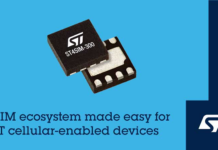The Industrial Revolution marked a major shift in how products were manufactured. This period marked an era of unprecedented growth, contributing to better living standards.
Most manufacturing was done at home by hand or with simple tools. But the development of more sophisticated machines and improvements in efficiency meant that goods could be manufactured on a much larger scale.
One such example is the introduction of the assembly line. Henry Ford completely revolutionised the automobile industry by installing moving lines to aid in the vehicle building process. Previously it took approximately 12 hours to build a single car but the assembly line cut that time down to two hours and 30 minutes. This production method contributed to the Model T becoming one of the best selling vehicles.
Manufacturing processes have seen major technological advancements since then in the way that products are created. And now the next major Industrial Revolution (dubbed “Industry 4.0”) is already under way with technologies based on the Internet of Things.
So what is the Internet of Things and how does it affect manufacturing?
The Internet of Things
The Internet has fundamentally changed nearly all aspects of everyday life. No longer do you need to rely on phone books to find local businesses or make bank transfers in person or even go to the store for your weekly shopping. Now the Internet makes it possible to do all these right in the comfort of your home or on the go with a mobile device.
The Internet of Things is the next iteration of what is possible with this vast global network.
It refers to a system of interrelated computing devices that all use the Internet protocol to transfer data and communicate with each other. Consumers already have a taste of what is possible with the Internet of Things. Smartphones and even some newer wearables are able to send commands to physical objects (e.g. turning on a light, adjusting thermostats, activating camera, etc.) over this network.
Some of the number involved are staggering. It is predicted that by 2020, there will be 4 billion connected people, over 25 million connected apps and over 25 billion embedded and intelligent systems, creating a $4 trillion revenue opportunity.
No other sector will be more heavily impacted than manufacturing
Manufacturing is right in the midst of a revolution that is largely driven by the Internet of Things and intelligent processes, something that was simply not possible before. New technologies provide deeper insight in each step of the production process. Management is thus able to make manufacturing far more productive and even cost effective as potential deficiencies can be quickly fixed.
Modern manufacturing plants bear little resemblance to the repetitious assembly lines that were typical in the early years of the Industrial Revolution. What you see now are highly advanced systems full of sensors and automated equipment. These interconnected devices are constantly relaying data that companies use to further drive the efficiency of the manufacturing process.
Make no mistake, manufacturing processes will continue to become more sophisticated as devices become more intuitive. The potential for manufacturers, distributors, and even consumers is huge. It’s not surprising then that some of the largest companies in the world are investing heavily in such systems.
Here we look at how the Internet of Things is currently transforming manufacturing.
Better Quality Control
Defects may not be a problem for products on a small scale. In some cases, it may not actually be worth the cost to reduce defects. But problems start to quickly mount when manufacturing on a larger scale (e.g. vehicles, smartphones, furniture, etc.). Suddenly you have a larger problem on your hands as a single defect can represent millions of dollars in losses.
Improving efficiency and quality in the manufacturing process thus becomes a necessity. And connected machines are key components of realising those objectives.
Take something as simple as the torque wrench, a tool that is often used to assemble complex parts. Manually keeping track of the employee who last used it or the date it was calibrated can be rather tedious. But when connected online, it can capture valuable bits of information in real time. Faults can then be traced back to the root cause and quickly addressed.
Inventory Optimisation
Inventory management refers to the process of ordering, storing, and tracking of products. It also entails keeping inventory at optimal levels. For example, inventory that fails to move is a waste of valuable shelf space and items that are constantly out of stock represents a loss in revenue. Both of which result in opportunity costs for the company.
The Internet of Things helps to solve this problem. Products that can be easily tracked allow companies to keep a close eye on stock levels. This translates to better inventory management as companies can receive real time alerts whenever certain items reach low levels. Orders for new inventory can then be automatically sent out so new products can reach the warehouse on time. Similarly, poor selling items can be removed to make room for other products with better potential.
As technology based on the Internet of Things progresses, the applications are practically endless and enable improvements in efficiency at every step of the manufacturing process. Companies around the world are already reaping the benefits and will continue to do so as advancements are made.
Source: http://www.itproportal.com


















